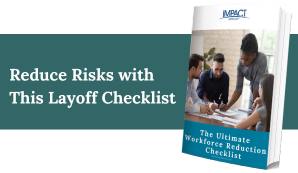Résumé writing. For some, those two words bring anxiety, dread, and procrastination. For me, they represent reinvention, opportunity, and moving forward. After a 16-year break from the traditional workforce, I now create customized marketing materials to position others for workforce reentry, career moves into similar roles, or other pursuits. After dusting off my prior experience and reflecting on my interests, I found this work to be a great fit for my communication strengths and human resources background.
Although each person’s workforce reentry journey is unique, a strategic and well-planned approach can make the undertaking less intimidating. Here are my tips to ensure your own successful return to the workforce.
Determine Your Focus
Identify your marketable talents, strengths, and attributes. What you did prior to your exit may or may not be the best fit for you now. Next, consider the skills you developed and sharpened during your time away. Assess your interests, the previous positions you held, and any additional experience gained. This includes volunteer roles. Pinpointing when you were most engaged, excited, and inspired will help you identify a path to rewarding work. Furthermore, knowing what truly motivates you can boost the staying power to overcome challenges and obstacles.
Do Your Homework
Leverage the countless resources available at your fingertips to construct your workforce reentry plan. This includes platforms that promote work-from-home positions to groups designed to assist those in similar situations. Read publications, articles, and blogs. View related media to broaden your understanding of the present state and expected direction of your target position. Analyze technology trends and their impacts. Should you complete coursework or a training program? Obtain related certifications? If so, do you have the resources and time available?
Build Your Network
Join organizations related to the industry of interest. Use LinkedIn not only as a network-building platform, but also to broaden your insight. In addition, leverage the site to view job postings and stay up-to-date on business news. Connect with former employers, co-workers, and others who are potential avenues into a prospective company. Consider setting up informational interviews. These conversations can be a valuable source for finding out more about a profession or company. Furthermore, they expand your network’s reach—and possibly lead to a job interview.
Market Yourself
The first impression you make will likely be your résumé. Views vary on using a functional résumé versus a traditional reverse chronological format. This is especially true when there are gaps in employment. In most instances, the traditional format with a strong summary section may be the best approach. Veering outside of the expected format tends to indicate you are trying to hide something. Rather than hide, showcase your achievements at the top in a well-crafted summary section. Don’t forget to customize your résumé for each position. In addition, ensure your LinkedIn profile does not conflict with anything in your résumé.
Furthermore, a cover letter can differentiate you from other candidates. Use it to tell the reader why you are a fantastic fit for the position and the organization. In addition, it also offers an opportunity to expand on experiences you gained during your career break. In evaluating all personal marketing, put yourself on the other side of the process. If you were a recruiter or potential employer, would it capture your interest and prompt you to start the conversation?
Display Confidence
Convincing a hiring manager you will be a good fit starts with preparation and a positive attitude. Do not devalue your life experiences. Instead, identify your unique selling points. A recent LinkedIn survey revealed creativity, persuasion, collaboration, and time management to be the top soft skills for 2019. Assess your personal attributes and determine how you can best articulate their value to a potential employer.
During the interview, emphasize your drive and dedication and the why. Let the interviewer know you are excited about your workforce reentry. Furthermore, be confident that your experiences translate well into the target position. Explain why the role aligns with your strengths and where you can make an impact. If you genuinely display enthusiasm about the role and what you bring to an organization—it will be noticed.
Lastly, sending a thank you note after the interview is another opportunity to highlight why you will be a good fit. Also, you can address follow-up questions you have for the company.
Be Persistent
Evaluate your progress and make course corrections as needed. Overcoming gaps in employment and navigating your reentry can be challenging, frustrating, and exhausting. You may encounter disappointments and setbacks. However, with a carefully thought-out approach, you will persevere and find that right-fit opening for your return.
Career Coaches can be an invaluable resource in navigating the job market! Discover how we empower job seekers to optimize their results.



